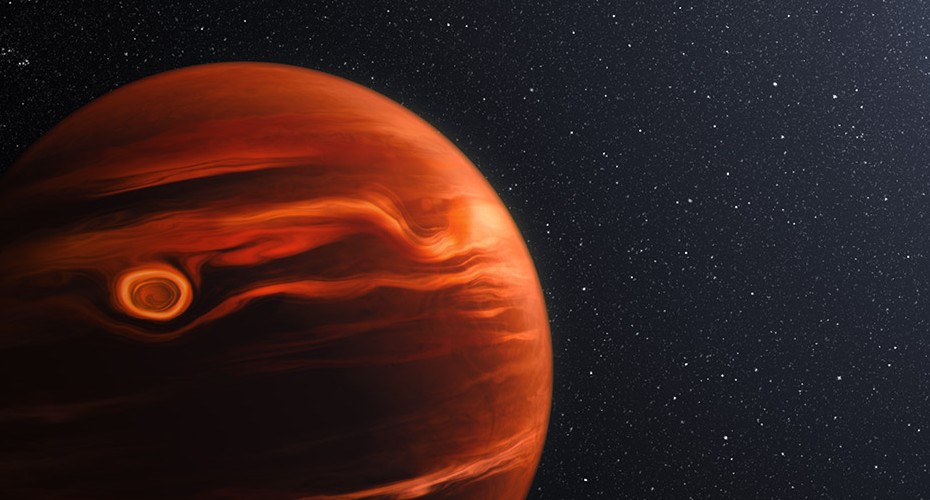Intricate details of far-away planet’s atmosphere revealed through NASA’s James Webb Space Telescope

credit: NASA, ESA, CSA, Joseph Olmsted (STScI)
Scientists have identified the intricate features of a distant planet’s atmosphere, revealing clouds made from silicate particles (grains of sand) that swirl across the surface of the far-away world.
A team of international researchers, including Professor Sasha Hinkley of the University of Exeter and supported by the UK Science and Technology Facilities Council (STFC) made the discovery using data from NASA’s James Webb Space Telescope.
The researchers used the state-of-the-art telescope to study the planetary mass companion VHS 1256 b, which is about 40 light-years away and orbits not one, but two stars over a 10,000-year period.
They found an atmosphere that is constantly rising, mixing, and moving during its 22-hour day, bringing hotter material up and pushing colder material down.
The team also discovered clear detections of water, methane and carbon monoxide with Webb’s data, and found evidence of carbon dioxide. This is the largest number of molecules ever identified all at once on a planet outside our solar system.
The results of the study are published in The Astrophysical Journal Letters on March 22.
Professor Hinkley said: “This result speaks to the incredible combination of capabilities that is offered by JWST, and a huge amount of credit goes to the hundreds of engineers, technicians, and scientists that have worked over the last 20 years to make JWST a reality.”
VHS 1256 b has low gravity compared to more massive brown dwarfs, which means that its silicate clouds, clouds made of the same material that comprises grains of sand, can appear and remain higher in its atmosphere where Webb can detect them. Another reason its skies are so turbulent is the planet’s age. In astronomical terms, it’s quite young. Only 150 million years have passed since it formed – and it will continue to change and cool over billions of years.
Lead author Brittany Miles, of the University of Arizona, said “We’ve identified silicates, but better understanding which grain sizes and shapes match specific types of clouds is going to take a lot of additional work. This is not the final word on this planet – it is the beginning of a large-scale modeling effort to fit Webb’s complex data.”
The team came to these conclusions by analyzing data known as spectra gathered by two instruments aboard Webb, the Near-Infrared Spectrograph (NIRSpec) and the Mid-Infrared Instrument (MIRI). Since the planet orbits at such a great distance from its stars, the researchers were able to observe it directly, rather than using the transit technique or a coronagraph to take these data.
The researchers observed VHS 1256 b as part of Webb’s Early Release Science program, which is designed to help astronomers use JWST in the optimal way going forward and take full advantage of its capabilities.
Professor Beth Biller, University of Edinburgh and Royal Observatory Edinburgh (ROE) astronomer and co-author of the study said: “This is an exciting finding because it illustrates how different clouds on another planet can be from the water vapour clouds we are familiar with on the Earth. These silicate clouds are like a perpetual, very fine-grained but very hot sandstorm in the atmosphere. Directly observing them answers some longstanding questions in astronomical research and is a significant step on our journey to understand planetary-mass objects such as this”.
Professor Gillian Wright, Director at the STFC UK Astronomy Technology Centre and European Principal Investigator for MIRI, said: “JWST is the only telescope that can measure all these molecular and dust features together. The dynamic picture of the atmosphere of VHS 1256 b provided by this study is a prime example of the discoveries enabled by using the advanced capabilities of MIRI and NIRSpec together.”
The team’s paper, entitled “The JWST Early Release Science Program for Direct Observations of Exoplanetary Systems II: A 1 to 20 Micron Spectrum of the Planetary-Mass Companion VHS 1256-1257 b,” will be published in The Astrophysical Journal Letters on March 22.



